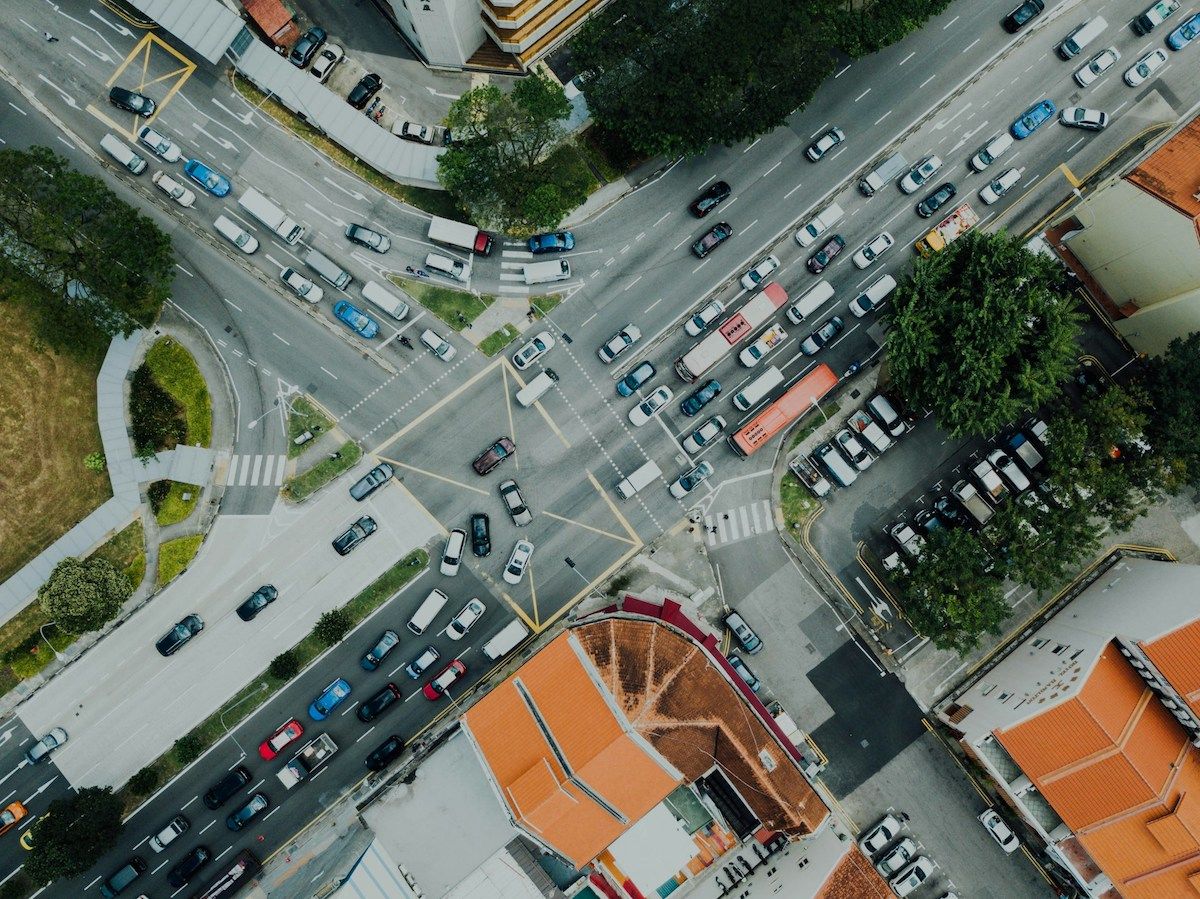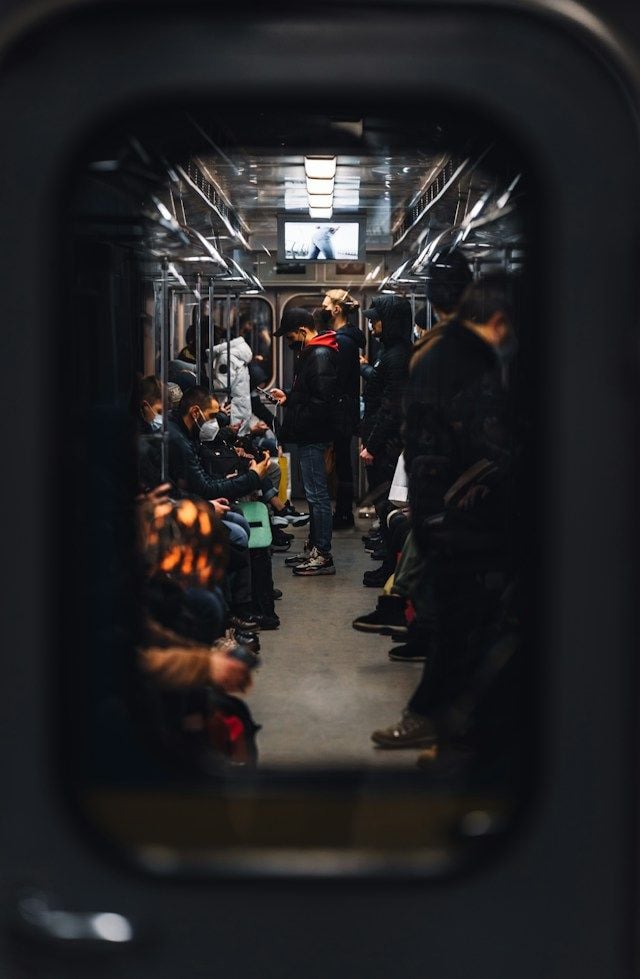Are You A Vanguard? Applications Now Open
Photo by Eddi Aguirre / Unsplash
This is your first of three free stories this month. Become a free or sustaining member to read unlimited articles, webinars and ebooks.
Become A MemberThis is an excerpt from Jarrett Walker’s “Human Transit, Revised Edition: How Clearer Thinking about Public Transit Can Enrich Our Communities and Our Lives.” It is published here with permission from Island Press.
In 2017, billionaire Elon Musk, promoting his effort to replace public transit with cars in tunnels, captured the essence of why public transit is easy to dislike:
I think public transport is painful … Why do you want to get on something with a lot of other people, that doesn’t leave where you want it to leave, doesn’t start where you want it to start, doesn’t end where you want it to end? And it doesn’t go all the time.
That’s why everyone doesn’t like it. And there’s like a bunch of random strangers, one of who might be a serial killer, OK, great. And so that’s why people like individualized transport, that goes where you want, when you want.
When you complain that transit doesn’t start where you want it to start, doesn’t end where you want it to end, and doesn’t go all the time, you’re describing inadequate public transit. With adequate funding and in the context of good city planning, public transit can do all of these things for vast numbers of people, though not for everyone and possibly not for Elon Musk.
But Musk’s other point is fundamental. Public transit does expose us to a bunch of random strangers, and this is its superpower. In the most effective public transit, different people with different purposes and destinations find the same vehicle useful at the same time. At its most successful, a transit system’s ridership is as diverse as the city or community it serves. It’s full of all kinds of people making all kinds of trips, all being a bunch of random strangers to each other.
Human beings like to spend time with people like themselves, so it’s not surprising that when they advocate for public transit services, they often demand service just for people like them.
Transit authorities are constantly being asked to focus on specific groups of people. Planners are told to create a service for seniors, a service for students, a service for tourists, a service for commuters, and a service for essential workers. Each of these groups wants or needs something a little different, and each has its own advocates thinking only about them. Under the pressure of this kind of input, it can seem natural to start transit planning with the idea that each of these groups needs its own service, designed specifically around its distinctive needs.
The result can be several transit lines going down the same street, connecting the same places. They may be in vehicles that look different, charging different fares, or even run by different companies. They might even be different technologies: a train, for example, with buses running alongside it.
In this situation, services are being run that don’t add much to anyone’s access to opportunity. Where two buses run side by side, or a bus runs alongside a train, that’s a bus and driver that could have been doing something that no other service is doing. It could have been going into an area that doesn’t have service, or offering higher frequency, or extending service later into the evening. All those alternatives would measurably expand access to opportunity, and thus ridership potential, in a way that two services running side by side do not.
No public transit authority possesses infinite resources, so public transit planning must maximize the public good using a limited budget. To do that, we must resist the urge to consider each group of users separately. Instead, we must think of patterns that many different people will find useful, so that all those people end up on the same vehicle, sharing the expensive time of a single driver. We must invite a bunch of random strangers onto the same bus or train, and the diversity of those strangers will be a key indicator of our success.

(Photo by Chuttersnap / Unsplash)
Often, when my firm begins a network planning project, various interest groups will come to us with maps already drawn of the services they need. The tourism authorities will draw up a network of tourist shuttles. The business community may have worked out a plan for circulators that will take workers and shoppers around a city center. A group of interested people from one neighborhood might come up with a bus that drives in a circle connecting just the places that matter to them. Any group of people — with a map, some colored pens, and a halfway competent facilitator — can draw the ideal network just for themselves.
But the right network for a city isn’t going to look like what any interest group would draw for itself. It has to offer the same service for lots of different people. It has to be good enough that many of those people find it useful, even if it isn’t exactly what any of them would find ideal.
In some places, it may seem naive to talk about diverse groups of people happily sharing a vehicle. The COVID-19 pandemic made everyone afraid of each other’s company for a while. In the United States and Canada especially, the early 2020s also saw a spike in mental health problems that sometimes showed up as bad public behavior. These problems, widely reported in the media, certainly contributed to people’s reluctance to share a small space with strangers. These were important factors in why ridership recovered slowly and why many transit authorities also struggled to hire enough bus drivers. What I called civility — the sense that everyone feels welcome and respected on transit — is at risk whenever some people’s bad behavior dominates everyone’s experience.
Even at the best of times, some groups are hard to harmonize. I attended a high school that was right next to a hospital, so I often rode buses that contained large numbers of kids along with a few older people who were going to medical appointments or other hospital business. These older folks didn’t much enjoy our boisterous company. I’m now one of these older people myself, and I react to raucous kids exactly the way they did.
[Next City is hosting a conversation with Jarrett Walker and Steven Higashide on February 21 at 12 p.m. Eastern. Register here to tune in!]
Once, the transit authority got so tired of the hospital’s complaints that they tried sending out two buses, one to pick us up and one to pick up everyone at the hospital. But they couldn’t sustain that expense when so many other people in the region didn’t have buses at all. There was room on the bus for both groups. The best solution was for us to get along.
So we kids got some stern lectures from bus drivers, and over time we reached a way of sharing space that neither of us liked but that we could all tolerate. We improved our behavior, and the older folks improved their tolerance of it.
In fact, our bus would have been even more peaceful if it had been even more diverse. We kids still dominated the bus with sheer numbers, and we all knew each other. Both of those facts cued us to behave much as we would if nobody else were around. But when more different people are on the same vehicle, nobody gets those cues, and almost everyone behaves better.

(Photo by Maksym Tymchyk / Unsplash)
If you are used to living in a city, all this may seem obvious. The social contract by which transit works is also the way any public space in a city works, whether it be a park, a civic square, or just a sidewalk. Most people get signals about the acceptable bounds of behavior, based partly on signals from the built environment and partly on how others are behaving. An important element of that process is that sometimes it fails. Sometimes someone is just too far outside the range of acceptable behavior and pushes others away. Then it becomes necessary for someone in authority to intervene.
When the social contract collapses, or when there are too many people who make others feel threatened or uncomfortable, then transit suffers, as it did in the years after COVID-19. But then, the sidewalk, square, and park suffer too, which means that the whole city suffers. The debate raging in the wake of COVID-19 was about cities as much as it was about transit. The city and its transit system have the same fate.
If you live in a suburban or rural and area and get around by car, you may not be as comfortable with the company of diverse strangers, because your daily life doesn’t require that. If you can drive from home to the shopping center, and then to the job in a business park, you may not spend much time in public spaces where everyone has a right to be. In that case, the intrinsic diversity of the bus, and of the street, may seem threatening to you.
I grew up in Portland, Oregon, at a time when that city was not very diverse, and long before it earned its later reputation as a safe place for quirky personalities. When I was 14 years old, I made my first visit to a big, diverse city, San Francisco. When I first emerged from Powell BART (Bay Area Rapid Transit) station onto a downtown sidewalk, I was terrified. So many different kinds of people, some behaving in ways I’d never seen before. But within a few months I learned to stop reading diversity as danger and to develop a subtler sense of what actual threats might be.
You have to do this to live in a big city and use its transit system. Like anything, it just takes practice.

Jarrett Walker has been designing public transit systems for over 20 years. He is an independent consultant in North America and Principal Consultant with MRCagney in Australia. He writes the popular transit blog HumanTransit.org.

20th Anniversary Solutions of the Year magazine